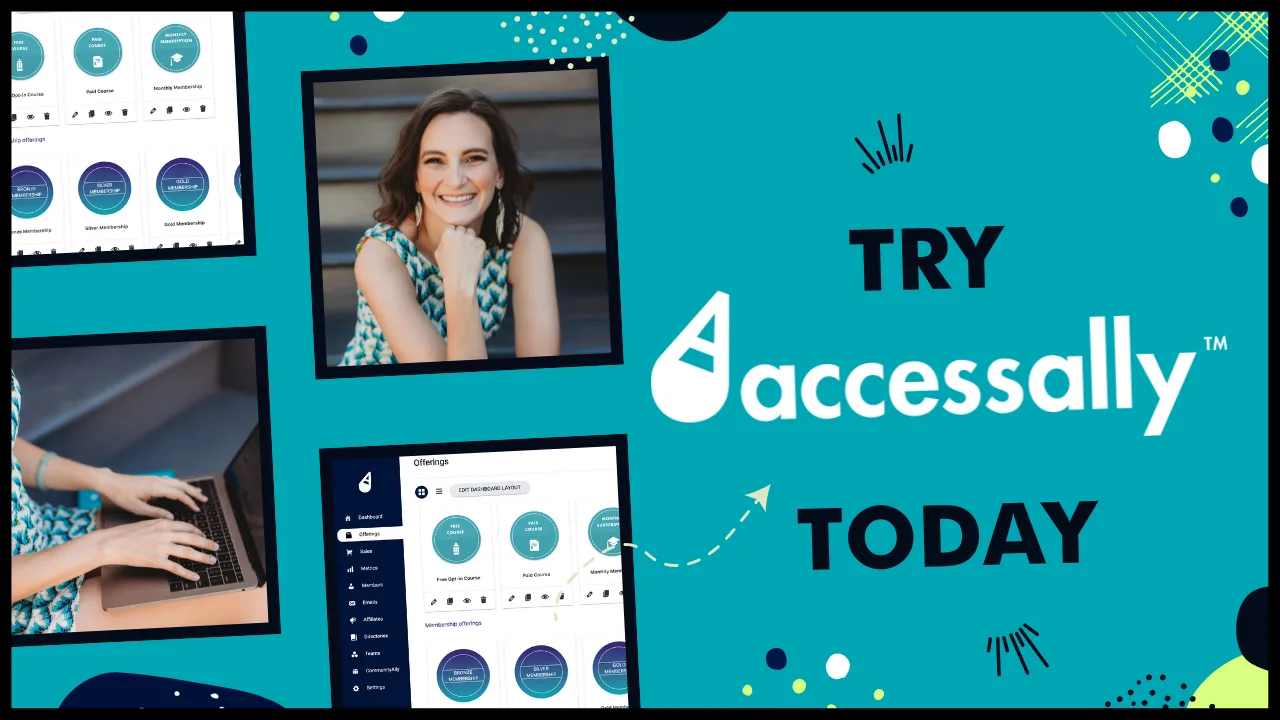Introduction and Overview: Streamlining Your Course Creation Business
Running a successful online course business involves far more than just creating great content. As your course empire grows, you’ll quickly discover that managing operations efficiently becomes crucial for sustainable growth and maintaining your sanity. When done right, optimizing your business operations can free up countless hours while simultaneously improving your students’ experience.
Many course creators find themselves caught in a cycle of constant content creation, customer support, and administrative tasks that leave little time for strategic growth. The key is to identify which operational aspects are consuming most of your time and energy, then implement systems and processes to streamline these areas. This might include automating your email sequences, establishing clear student onboarding procedures, or creating templates for common support requests.
Think of your course business as a well-oiled machine. Each component – from content delivery to payment processing, from student engagement to technical support – needs to work seamlessly with the others. The goal isn’t just to reduce your workload (though that’s a wonderful benefit), but to create a more professional and engaging experience for your students.
In this comprehensive guide, we’ll explore practical strategies to optimize every aspect of your course creation business. We’ll look at how to leverage tools like AccessAlly to automate repetitive tasks, streamline your content delivery, and create scalable systems that grow with your business. Whether you’re just starting out or managing multiple successful courses, you’ll find actionable steps to improve your operational efficiency.
By focusing on optimization now, you’ll build a stronger foundation for your course business that can handle growth without requiring proportionally more of your time and energy. Let’s dive into the specific areas where smart optimization can make the biggest impact on your business operations.
Foundation Concepts and Planning
Before diving into the technical aspects of optimizing your course operations, it’s essential to establish solid foundational principles that will guide your entire business structure. When done right, these fundamentals become the backbone of an efficient and scalable course creation system.
Start by mapping out your core operational workflows. This means documenting every step from content creation to student delivery, including your content planning process, recording schedule, editing timeline, and launch sequences. Think of this as creating a master blueprint that you can refine over time. Many course creators skip this crucial planning phase, only to find themselves scrambling to piece together processes when they’re already overwhelmed with students.
Next, establish your standard operating procedures (SOPs) for recurring tasks. This includes everything from how you organize your course materials to your method for responding to student questions. Consider using tools like HubSpot’s project management templates to streamline this process. The goal isn’t to create rigid rules, but rather to develop flexible frameworks that can evolve with your business.
Your payment and access systems deserve special attention at this stage. While platforms like Stripe and PayPal offer different advantages for course creators, what’s most important is choosing a system that aligns with your operational goals and student needs. Consider factors like automatic payment handling, refund processes, and how seamlessly these systems integrate with your course platform.


Time management is another crucial foundation stone. Block out specific times for content creation, student interaction, and business development. Many course creators burn out by trying to be available 24/7, but setting clear boundaries actually leads to better student outcomes and more sustainable business growth.
Finally, develop a clear strategy for scaling your operations. This means identifying which tasks must remain in your hands and which can be delegated or automated. Create detailed documentation for everything you do, even if you’re currently running solo. This forward-thinking approach will make it much easier to bring on team members or virtual assistants when the time comes to expand.
Step-by-Step Implementation Guide
When done right, optimizing your course creation business operations can transform your daily workflow from chaotic to seamless. Let’s break down the implementation process into manageable phases that you can tackle one at a time.
Start by conducting a thorough audit of your current course creation process. Track how long it takes you to complete each task, from content planning to video editing to student communication. This baseline measurement will help you identify the biggest time-drains in your workflow. Many course creators are surprised to discover they’re spending hours on tasks that could be automated or streamlined.
Next, focus on setting up your tech stack efficiently. Your course platform should integrate smoothly with your email marketing system, payment processor, and content delivery tools. Consider using Stripe for seamless payment processing, as it offers robust features specifically designed for subscription-based businesses. Additionally, implementing a project management tool like Asana or ClickUp can help you maintain oversight of your entire operation.
The third phase involves creating standard operating procedures (SOPs) for recurring tasks. Document every step of your content creation process, from initial outline to final publication. Include templates for course materials, email responses, and social media posts. These SOPs will become invaluable when you’re ready to delegate tasks or bring on team members.
Moving on to automation, identify repetitive tasks that don’t require your personal touch. Set up email sequences for student onboarding, configure automatic payment reminders, and create systems for certificate delivery upon course completion. For marketing automation insights, the HubSpot Blog offers excellent resources to complement your course delivery systems.
Finally, establish regular maintenance checkpoints to review and refine your systems. Schedule monthly reviews to assess what’s working and what needs adjustment. Pay special attention to student feedback and completion rates, as these metrics often reveal opportunities for operational improvements.
Remember to approach this optimization process gradually. Trying to overhaul everything at once can lead to overwhelm and resistance from team members. Instead, implement changes in small, manageable chunks, celebrating wins along the way. Your goal is to create sustainable systems that support both your business growth and your students’ success.
Keep in mind that optimization is an ongoing journey, not a destination. As your course business evolves, so too should your operational systems. Stay flexible and be willing to adapt your processes as new tools emerge and student needs change.
Advanced Strategies and Techniques
Start by implementing a robust payment processing system. While many creators default to basic payment options, choosing between Stripe or PayPal can significantly impact your business operations. Consider setting up automated payment plans and recovery systems for failed payments to minimize administrative overhead.
Next, focus on creating templates for everything – from your course modules to your email sequences. Unfortunately, many creators waste precious time reinventing the wheel with each new course launch. Instead, develop a master template library that includes video scripts, workbook layouts, and promotional materials. This approach can cut your production time by up to 50% while maintaining consistency across your offerings.
Automation should extend to your student support system as well. Consider implementing a tiered support structure: automated FAQ responses for common questions, community-based peer support for intermediate issues, and direct access to you or your team for complex challenges. According to HubSpot’s research, this approach can reduce support ticket volume by up to 35% while improving student satisfaction.
Data tracking is another crucial element that often gets overlooked. Set up comprehensive analytics to monitor student progress, completion rates, and engagement levels. This information becomes invaluable when you’re refining your courses or creating new ones. Pay special attention to where students typically get stuck or drop off – these are your opportunities for improvement.
Remember to build in regular system maintenance and review periods. Schedule quarterly audits of your operations to identify bottlenecks and inefficiencies. Are there tasks that can be further automated? Are your templates still serving their purpose? Is your tech stack still aligned with your business goals? These regular check-ins ensure your systems evolve alongside your business, rather than holding you back.
Common Challenges and Solutions
When scaling your course creation business, you’ll likely encounter several operational hurdles that can slow down your progress. Unfortunately, many creators get caught in the trap of trying to handle everything themselves, from content creation to technical support, leading to burnout and inconsistent delivery.
One of the biggest challenges is managing the continuous cycle of content updates and student feedback. To address this, implement a systematic review process where you block out specific days each month for content updates. Use a project management tool to track student feedback and prioritize changes based on impact. This prevents the overwhelming feeling of trying to update everything at once while ensuring your course material stays relevant.
Technical issues often become a major time sink for course creators. Rather than attempting to solve every problem yourself, consider creating a comprehensive FAQ section and training a virtual assistant to handle common technical queries. This investment in documentation and support will save countless hours in the long run, allowing you to focus on high-value activities like course development and student engagement.
Payment processing and access management can also become complex as your student base grows. While platforms like Stripe or PayPal offer robust solutions, it’s essential to establish clear protocols for handling refunds, payment plans, and access issues. Creating standard operating procedures for these scenarios will help maintain consistency and reduce decision fatigue.
Student engagement and completion rates are ongoing challenges that require strategic attention. According to the HubSpot Blog, successful course creators often implement automated check-ins and milestone celebrations to keep students motivated. Consider setting up an email sequence that triggers based on student progress, offering encouragement and additional resources at key points in their learning journey.
Best Practices and Optimization
When done right, optimizing your course creation workflow can dramatically reduce the time you spend on administrative tasks while improving the student experience. The key is implementing systems that scale with your business growth without sacrificing quality or personal touch.
Start by auditing your current operations. Track how much time you spend on different tasks over a week – from content creation to student support. You’ll likely discover that certain activities eat up disproportionate amounts of time without delivering equivalent value. Common culprits include manually processing refunds, individually responding to similar questions, and wrestling with tech integrations.
Your payment processing system forms the backbone of a smooth operation. While both options have merit, choosing between Stripe and PayPal should align with your specific business needs and student preferences. Consider factors like international reach, transaction fees, and integration capabilities with your existing tools.
Automation is your friend, but it needs a human touch. Set up automated welcome sequences and progress check-ins, but personalize them based on student behavior and engagement patterns. According to HubSpot’s research, personalized emails generate 6x higher transaction rates than generic ones. This approach allows you to maintain meaningful connections while reducing manual intervention.
Create standard operating procedures (SOPs) for recurring tasks like content updates, student onboarding, and technical support. These documents should be detailed enough for team members to follow but flexible enough to accommodate unique situations. Unfortunately, many creators skip this step, leading to inconsistent experiences and repeated mistakes.
Remember that optimization is an ongoing process, not a one-time fix. Schedule quarterly reviews of your systems and procedures, gathering feedback from both your team and students. This regular assessment helps you identify emerging bottlenecks and opportunities for improvement before they impact your course delivery or student satisfaction.
Case Studies and Examples: Real-World Optimization Success Stories
Let me share some illuminating examples of how course creators have transformed their operations through strategic optimization. When done right, these changes can dramatically improve both your efficiency and student success rates.
Take Sarah, a business coach who was spending 15 hours per week on administrative tasks for her signature course. By implementing automated welcome sequences and progress tracking through AccessAlly, she cut that time down to just 2 hours weekly. This gave her back 52 hours per month to focus on content creation and student support. The key was setting up systematic student onboarding that triggered based on purchase behavior, something you can learn more about in AccessAlly’s guide on choosing between Stripe and PayPal for payment processing.
Another inspiring example comes from Marcus, a photography instructor who struggled with course completion rates hovering around 20%. By restructuring his operations to include automated check-ins, progress celebrations, and strategic content dripping, he boosted completion rates to 75%. What’s particularly noteworthy is how he used data from HubSpot’s research on customer engagement to inform his communication strategy.
Lisa’s case demonstrates the power of streamlining content delivery. She was manually creating new modules for her tech training course, often working late into the night. By implementing a content calendar and batching her creation process, she now produces three months of content in just one focused week. This approach allowed her to scale from 50 to 500 students while maintaining high-quality engagement.
The common thread in these success stories is the shift from reactive to proactive operations. Each creator identified their biggest time drains and implemented systems to address them. They focused on automating repetitive tasks while maintaining personal touches where they matter most. Remember, optimization isn’t about removing the human element – it’s about creating space for more meaningful interactions with your students.
Future Considerations and Conclusion
As the online education landscape continues to evolve, it’s crucial to think strategically about how your course creation business will adapt and grow. When done right, optimizing your operations isn’t just about today’s efficiency – it’s about building a sustainable foundation for future scaling.
Technology will continue to reshape how we deliver and consume online education. Stay informed about emerging trends like AI-assisted content creation, enhanced analytics capabilities, and improved student engagement tools. However, remember that not every new tool or trend needs to be immediately adopted – focus on innovations that genuinely enhance your students’ learning experience.
Data security and privacy regulations are becoming increasingly important in the digital education space. Make sure your systems are compliant with current standards and can adapt to new requirements. This includes proper handling of student information, secure payment processing, and maintaining clear privacy policies.
Finally, remember that the most successful course creators maintain a balance between automation and personal touch. While efficiency is crucial, your students will view your course as more valuable when they feel personally supported and guided. Consider how you can scale while preserving the human elements that make your courses special.
By thoughtfully implementing these operational improvements and keeping an eye on future developments, you’re positioning your course creation business for sustainable growth and success. The key is to remain flexible and ready to adapt while staying true to your core mission of delivering exceptional educational experiences.




